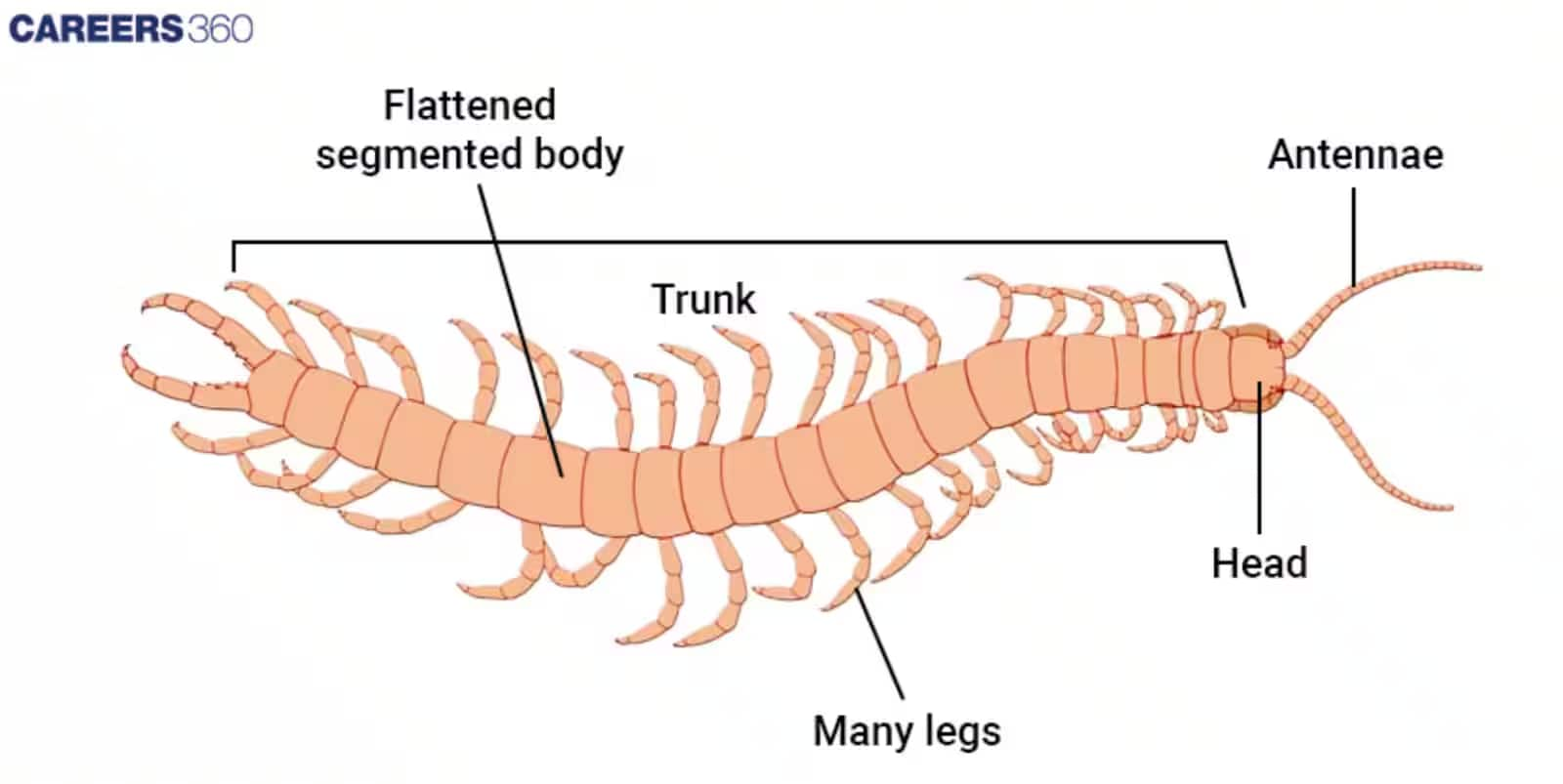Arthropoda
Arthropods are invertebrates in the phylum Arthropoda. Phylum Arthropoda is a group of invertebrate animals that includes insects, spiders, crustaceans, and centipedes. These animals have jointed legs, an exoskeleton, and a segmented body. Arthropods are found in nearly every environment on Earth, from land to water. This concept is part of the Class 12 chapter on Animal Kingdom in Biology. Understanding the definition of phylum Arthropoda helps students learn about the diversity of these creatures and how they play important roles in ecosystems.
This Story also Contains
- Phylum Arthropoda
- General Characteristics of Arthropoda
- Classification of Arthropoda
- Phylum Arthropoda Examples
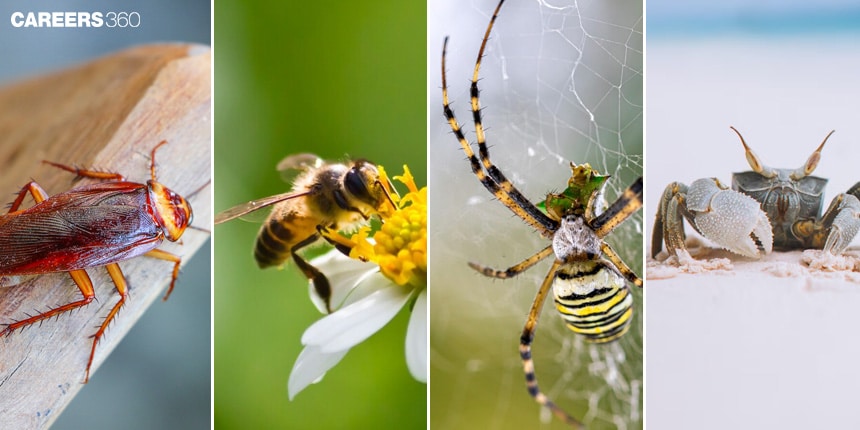
Phylum Arthropoda
The Arthropoda phylum is the largest and most diverse group of animals in the Animal Kingdom, which includes insects, spiders, crustaceans, and several others. These animals have segmented bodies, jointed legs, and a hard outer shell. They are important in all ecosystems worldwide because they inhabit both deep ocean environments and land. Arthropods and their distribution are important to understand Earth's biodiversity, which is why this phylum is very prominent in the study of Zoology.
Read More:
General Characteristics of Arthropoda
The general characters of Arthropoda that contribute to their evolutionary success and ecological diversity:
Exoskeleton Composition and Molting (Ecdysis)
Both annelids and arthropods have segmented bodies and yet they differ in that the arthropods have an armour-like covering called the exoskeleton, which is composed of a material known as chitin. With their development, they also go through a process of moulting (ecdysis) where they peel their skin and create a new, bigger one.
Segmented Body Plan
Arhopods have limbs and joints and their body is generally segmented, falling under the head, the thorax and the abdomen. This makes possible the specialization of body regions and functions.
Jointed Appendages
The Members of the phylum Arthropoda have bilateral symmetry and paired jointed appendages (legs, antennae) through which movement and manipulation of the environment are made possible hence easy manipulation of the surrounding environment hence the ability to inhabit a variety of places.
Bilateral Symmetry
Arthropods are bi-laterally symmetrical that is their bodies are symmetrical in such a way that they can reflect each other. This is related to the smooth and well-coordinated locomotion of certain parts of the body’s structure.
Open Circulatory System
They have an open circulatory system, in which blood or rather the hemolymph flows without any restrictions within body compartments and directly washes the organs. This system nourishes them metabolically and helps in the distribution of nutrition and oxygen.
Nervous System and Sensory Organs
The main organ, nervous system consists of a brain and a ventral nerve cord that runs along the dorsum of the body. They wield well-developed appendages called sensory appendages that help them perceive stimuli such as light through the compound eye, touch through antennae, chemical signals through chemoreceptors, and many other forms that improve the arthopoda reaction and communication with the surroundings.
Diagram of Arthropoda
Below is the arthropoda diagram with its body parts
Classification of Arthropoda
The subphylum and classes of arthropods are discussed below:
Subphylum Trilobitomorpha
Extinct
Subphylum Chelicerata
Class Arachnida (spiders, scorpions)
Class Merostomata (horseshoe crabs)
Class Pycnogonida (sea spiders)
Subphylum Myriapoda
Class Chilopoda (centipedes)
Class Diplopoda (millipedes)
Subphylum Crustacea
Class Malacostraca (crabs, lobsters)
Class Branchiopoda (brine shrimp)
Class Maxillopoda (barnacles)
Subphylum Hexapoda
Class Insecta (insects)
Class Entognatha (springtails)
Phylum Arthropoda Examples
The examples of phylum arthropods are given below:
Insecta
Body structure: Insects have a three-part body. It includes a head with sensory organs such as eyes and antennae, a thorax with three sets of legs most of the time wings, and the abdomen which is involved in digestion and reproduction.
Life cycle (metamorphosis): Insects pass through metamorphosis- either holometabolous (egg, larva, pupa, adult) while others are hemimetabolous (egg, nymph, adult) so they can occupy different ecological niches in their life cycle.
Ecological importance: Without insects, the ecosystems would suffer through pollination inability, decomposition and food resources. It is known that they affect ecosystems and agriculture as pollinators and pests.
Example: Honeybee (Apis mellifera), Honeybees are important as they contribute to crop pollination and maintenance of other species.
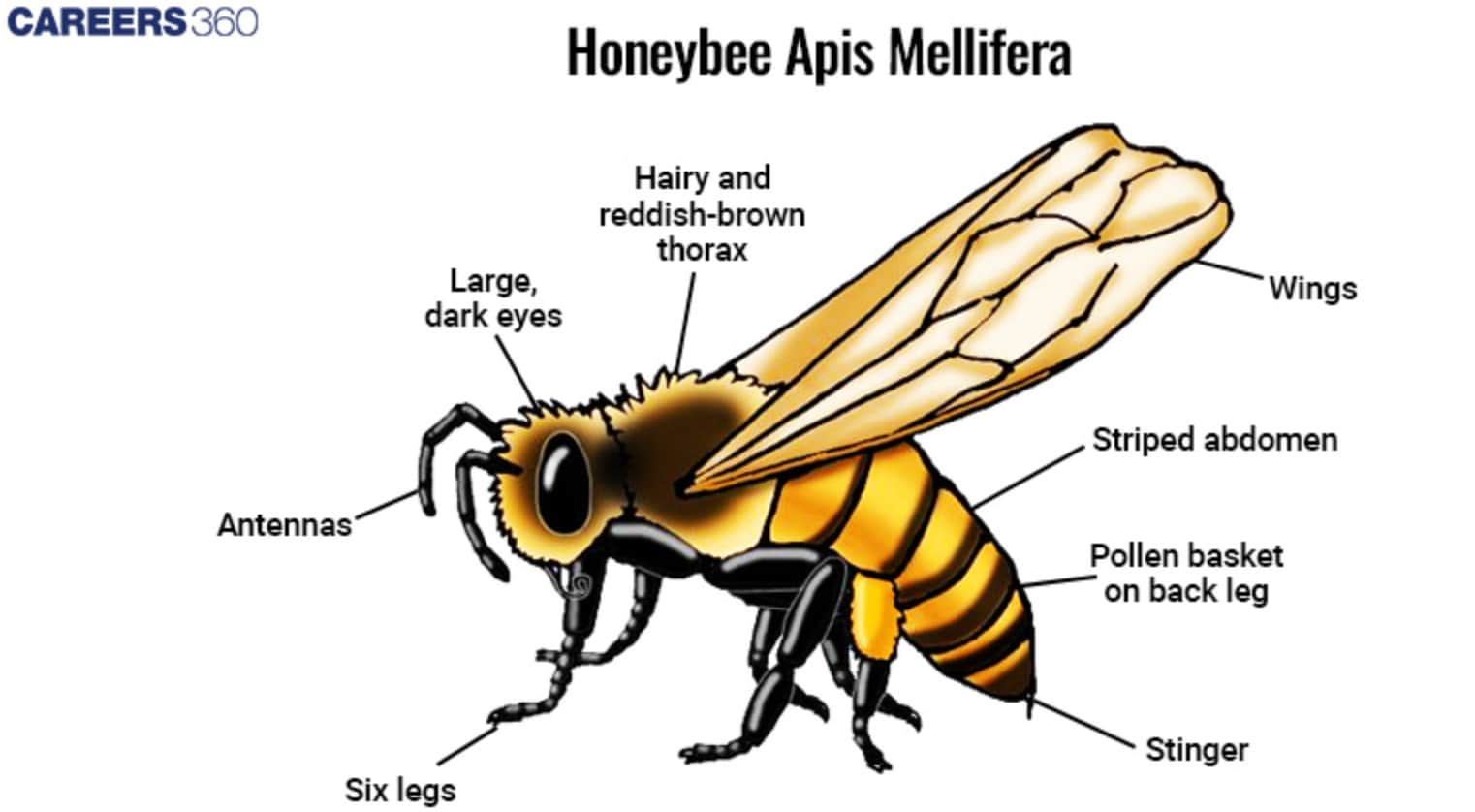
Arachnida
Body structure: Arachnids have a body divided into two main parts, the Cephalothorax which is the fused head and the thorax and the abdomen. While the cephalothorax is responsible for the housing of the eyes, mouthparts, and legs, the abdomen is also assigned functions of the digestive and reproductive organs.
Specialised appendages: Some arachnida such as spiders have special limbs, chelicerae are used in feeding whereas most have fangs and pedipalps that are sensory and feeding organs as well as being reproductive.
Venom and silk production: Most arachnids, for example, spiders, secrete toxins to paralyze their food and threads for building webs to catch the prey or to build nests for the protection of eggs among others.
Example: Spider (Araneae), The spiders are popular since they use silk to twist webs that they use in catching their meal. These are pest management instruments that help to regulate the pest populations and are resident in different ecosystems globally.
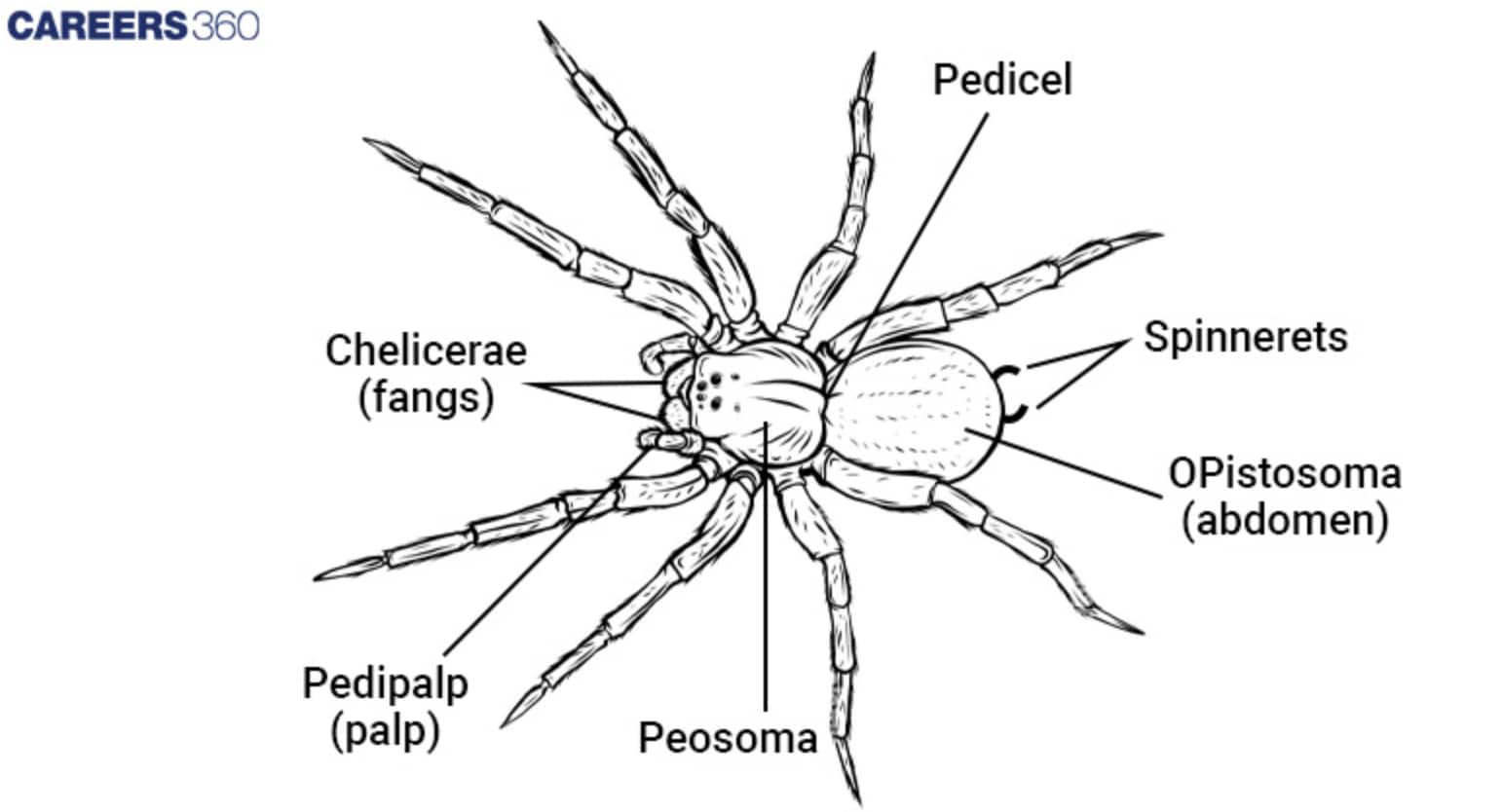
Crustacea
Body structure: Crustacea has a head and thorax fused, which is called the cephalothorax and the remainder of the body is the abdomen. These often consist of more than one pair of legs, mouthparts and/or antennae which help in feeding and/or perceiving the environment.
Aquatic adaptations: In a general, crustaceans are mostly water-dwelling animals and hence they mostly exhibit some traits found in their respiratory system like gills for respiratory purpose and their locomotive and feeding appendages like limbs.
Economic importance: Crustaceans are of vast economic importance, as they serve as food, especially crabs, lobsters, and shrimp, and as a source of fishery and aquaculture in the global market.
Example: Crab (Brachyura), Crabs are marine and freshwater animals that have broad flat heads and thorax that together are known as the cephalothorax, strong claw-like pincers which are used for defences as well as for manpower. It is relevant to both the structure of ecosystems and food chains and it is considered as a source of food for other living beings including human beings.
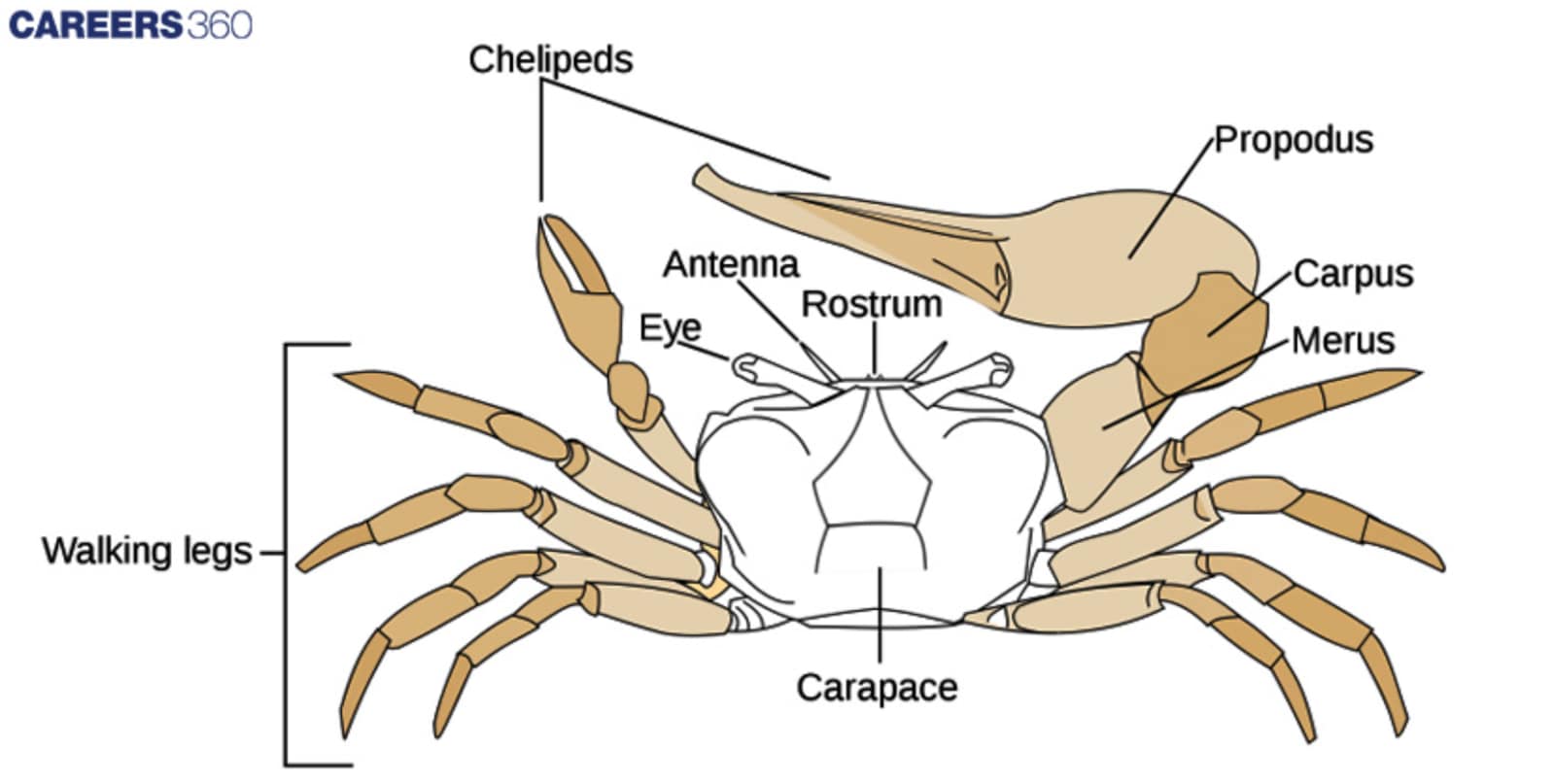
Myriapoda
Distinctive features: Class Chilopoda, which includes the centipedes, is characterized by elongated bodies and a pair of legs in every one of the segments of the body. These creatures are carnivorous, and they kill their prey using special claws which are venomous. The class Diplopoda is known as millipedes. They have two pairs of legs on each body segment and are tearing vegetarians, scrap feeders, and decomposers of plant litter.
Habitat and behaviour: Myriapods are usually associated with habitats with high humidity, including soil, litter layer, and logs. While centipedes are very swift when hunting for their prey, millipedes are very slow-moving and to a large extent depend on their shells and chemical secretion to protect them from their predators.
Example: The centipede is associated with speed and predatory nature because of the way it catches its prey. They use five-millimetre-long venomous forcipules for holding and paralyzing their prey, insects and other small animals. These participates in the regulation of some pests in their natural environment.
Read More:
Recommended Video on Arthropoda
Frequently Asked Questions (FAQs)
The earliest arthropods developed adaptations like breathing tracheae. They also created an exoskeleton, which protects animals' skin from drying out and offers support in the event of buoyant water.
The earliest arthropods are thought to have emerged 545 million years ago, according to fossil records. Initially, only scorpions, centipedes, and millipedes were able to adapt to dry land.
Arthropoda makes up over 80% of all animal species. The largest phylum in the animal kingdom is made up of these species, which have evolved specific coping mechanisms over time to endure the varying environmental conditions.
Arthropods are classified into several subphyla based on their body structure and appendages:
Subphylum Chelicerata: Consists of Class Arachnida – the list of animals belonging to this class is spiders and scorpions.
Subphylum Crustacea: Such as; crabs, lobsters, shrimp
Subphylum Myriapoda: Some of it includes Chilopoda which are Centipedes and Diplopoda which are millipedes.
Subphylum Hexapoda: The class include Insecta (insects).
Insecta: Honeybee (Apis mellifera), butterfly, beetle
Arachnida: Spider (Araneae), scorpion , tick
Crustacea: Crab (Brachyura), shrimp, lobster
Myriapoda: Chilopoda – centipede, Diplopoda – millipede
Arthropods are a group of creatures that include spiders, ticks, centipedes, mites, crabs, lobsters, scorpions, shrimp, and more.
Arthropods and annelids are thought to have descended from the same ancestral root. It is thought that the three arthropod lineages diverged from a single common ancestor.
